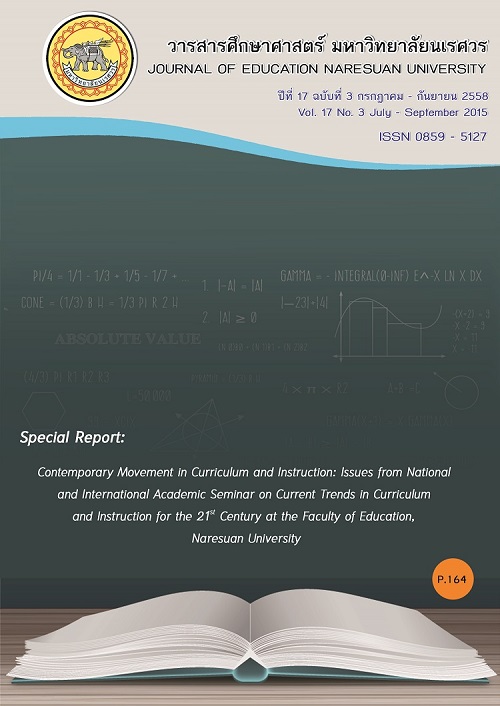การพัฒนามนุษย์ตามหลักพระพุทธศาสนา: การนำเสนอแนวคิดจาก พระสุตตันตปิฎก
Main Article Content
Abstract
บทคัดย่อ
การวิจัยครั้งนี้มีวัตถุประสงค์หลักเพื่อศึกษาและนำเสนอแนวคิดการพัฒนามนุษย์ตามหลักพระพุทธศาสนา: การนำเสนอแนวคิดจากพระสุตตันตปิฎก โดยมีวัตถุประสงค์เฉพาะ 3 ประการคือ 1) เพื่อวิเคราะห์เนื้อหาของพระไตรปิฎก จากคัมภีร์มัชฌิมนิกาย ภายในกรอบแนวคิดการพัฒนาทรัพยากรมนุษย์ 2) เพื่อสังเคราะห์แนวคิดการพัฒนาพฤติกรรมของมนุษย์ที่ปรากฏตามคัมภีร์มัชฌิมนิกาย มัชฌิมปัณณาสก์ เฉพาะคหปติวรรค และ 3) เพื่อนำเสนอแนวคิดการพัฒนาพฤติกรรมมนุษย์ที่ปรากฏตามคัมภีร์มัชฌิมนิกาย มัชฌิมปัณณาสก์ เฉพาะคหปติวรรคในพระสุตตันตปิฎก
ระเบียบวิธีวิจัย เป็นการวิจัยเชิงคุณภาพ 3 ขั้นตอน คือ ขั้นตอนที่ 1 วิเคราะห์แนวคิดการพัฒนามนุษย์ที่ปรากฏตามคัมภีร์มัชฌิมนิกาย มัชฌิมปัณณาสก์ คหปติวรรค โดยจัดหมวดหมู่ข้อมูลตามกรอบของการพัฒนาทรัพยากรมนุษย์ ขั้นตอนที่ 2 สังเคราะห์แนวคิดการพัฒนาพฤติกรรมของมนุษย์ที่ปรากฏตามคัมภีร์มัชฌิมนิกาย มัชฌิมปัณณาสก์ เฉพาะคหปติวรรค และ 3 นำเสนอแนวคิดการพัฒนาพฤติกรรมมนุษย์ที่ปรากฏตามคัมภีร์มัชฌิมนิกาย มัชฌิมปัณณาสก์ เฉพาะคหปติวรรค โดยตรวจสอบแนวคิดการพัฒนาพฤติกรรมมนุษย์ตามหลักพระพุทธศาสนา 2 รอบ รอบที่ 1 ตรวจสอบความเหมาะสม ความถูกต้อง ครอบคลุมของผลการสังเคราะห์แนวคิดโดยวิธีสัมมนาอิงผู้เชี่ยวชาญ จำนวน
11 ท่าน รอบที่ 2 ตรวจสอบซ้ำ โดยผู้ทรงคุณวุฒิอีกกลุ่มหนึ่งจำนวน 11 ท่าน โดยเทคนิควิธีสัมภาษณ์
ผลการวิจัย พบว่า
แนวคิดการพัฒนามนุษย์ตามหลักพระพุทธศาสนา : การนำเสนอแนวคิดจากพระสุตตันตปิฎกประกอบด้วยแนวคิดการพัฒนาพฤติกรรมมนุษย์ 3 ระดับ คือ 1) ระดับสติปัญญาปานกลาง 2) ระดับสติปัญญาน้อย 3) ระดับที่ไม่พร้อมต่อการพัฒนา ซึ่งแต่ละระดับมีองค์ประกอบการพัฒนาคือ 1) ด้านคุณสมบัติของผู้สอนคือการเป็นครูที่ดี 7 ประการ 2) ด้านองค์ประกอบของกลุ่มเป้าหมายที่แสดงธรรมสอนประกอบด้วยจริต 6 ประการ 3) ด้านลักษณะวิธีการตอบปัญหามี 4 วิธี 4) ด้านลีลาการสอนมี 4 อย่าง 5) ด้านวิธีการสอนมี 3 วิธี 6) ด้านหลักการสอนมี 7 อย่าง 7) ด้านกลวิธีและอุบายประกอบการสอน 5 วิธี 8) ด้านเนื้อหาในการพัฒนาพฤติกรรม 7 หลักธรรม 9) ด้านการเปลี่ยนแปลงพฤติกรรมที่เกิดจากการได้ฟังพระธรรมเทศนามี 5 อย่าง
คำสำคัญ : การพัฒนามนุษย์/ หลักพระพุทธศาสนา/ การนำเสนอแนวคิดจากพระสุตตันตปิฎก
Abstract
This research aims to study and introduce the concept of human development with the Buddhist principles: Content Presentation from the Sutapitaka Text. The specific purposes were: 1) to analyze the content of the Tripitaka from the Majjimanikâya in the scope of human resource development; 2) to synthesize concept of human development shown by the Majjimabannasaka kahapativacca in Majjimanikâya Text; 3) to present the concept of human development with the Buddhist principle shown by the Majjimabannasaka kahapativacca in Majjimanikâya Text.
The research methodology was qualitative, composed of three steps. Firstly, the analysis of the of human development with the Buddhist principles: Content Presentation from the Sutapitaka Text, and classified the contents by means of human resource development. Secondly, the synthesis of the concept of human development shown by the Majjimabannasaka kahapativacca in Majjimanikâya Text. Thirdly, present the concept of human development with the Buddhist principle: Content Presentation from the Sutapitaka Text was verified twice by two groups of experts, 11 experts who met in a Connoisseurship, and 11 other experts who were interviewed.
The results showed that the concepts of human development with the Buddhist principles: Content Presentation from the Sutapitaka Text consisted of 3 levels: 1) intellectual level 2) trainable level 3) idiot level. Each level consisted of development components were: 1) the qualifications of the instructor consisting of 7 good teacher qualifications; 2) the composition of the audience target to preach teachings consisting of 6 deeds; 3) the manners how to answer problems consisting of 4 manners; 4) the teaching style consisting of 4 styles; 5) the method of teaching consisting of 3 methods; 6) the teaching principles consisting of 7 principles; 7) the strategies and teaching devise consisting of 5 strategies; 8) the content of behavioral development consisting of 4 principles; and 9) the behavioral changes by listening to the sermon consisting of 5 changes.
Keywords: Human Development/ Buddhist Principles/ Content Presentation from the Sutapitaka Text
Article Details
The owner of the article does not copy or violate any of its copyright. If any copyright infringement occurs or prosecution, in any case, the Editorial Board is not involved in all the rights to the owner of the article to be performed.


